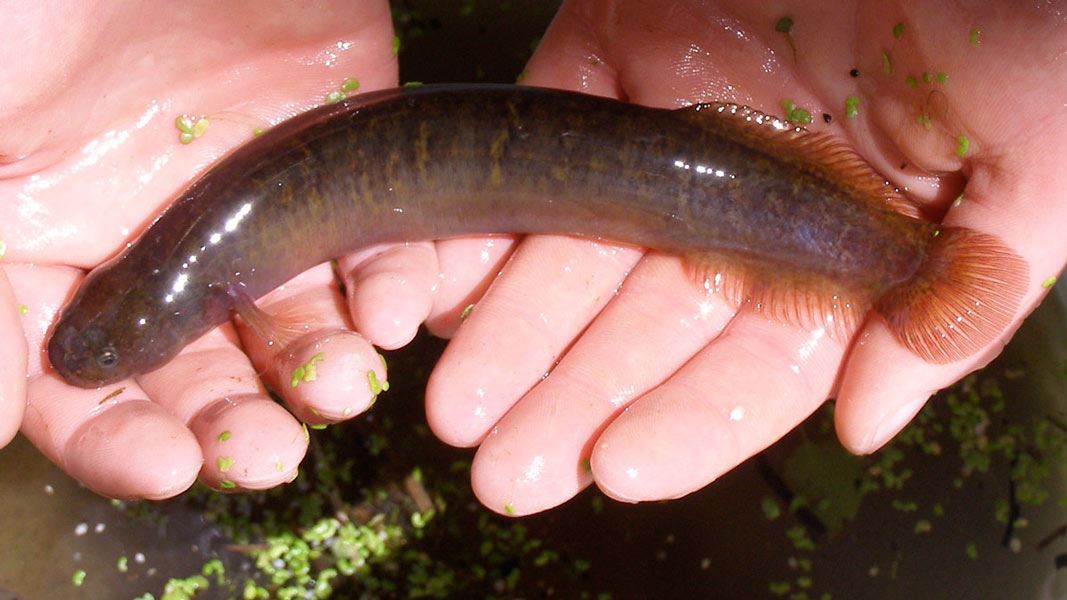Threats to native fish
Around half of our fish species spend time at sea and move up and downstream as part of their lifecycle. These migratory species are affected by structures in streams that prevent them migrating, including dams and badly made or poorly maintained culverts.
Habitat for native fish is shrinking as wetlands are drained and streamside vegetation removed.
Some fish compete with native fish for food and space, and prey on their eggs and young. Others like koi carp can reduce the water quality in a lake or river and make it unsuitable for native fish.
Contaminants discharged into waterways can affect fish. These include pollutants like chlorine and nitrogen, as well as sediment washed off the land.
Taking water for irrigation and other uses reduces the amount in our waterways – if we take too much there may not be enough left for our native fish.
How you can help native fish
You can help with conservation of our freshwater fish by protecting their habitat and making sure their migration routes are passable.
- Protect the vegetation beside a stream – fence off stream edges from stock and plant natives to create a shady cool habitat.
- Find out where whitebait spawn and fence off and replant these areas as a priority.
- Provide for fish passage. Find out about what freshwater fish are present in your local river or stream and make sure any culverts, weirs or other structures enable them to move freely along the waterway and to the sea and back.
- Tell people about our amazing freshwater fish and how they need to be able to move up and downstream. Get involved and support initiatives such as World Fish Migration Day (external site) in 2020.
- Protect populations of threatened native fish from invasive species. Occasionally, barriers in a stream may be important for protecting threatened native species (including mudfish and non-migratory galaxias) from invasive fish. These barriers can be natural (like waterfalls) or built artificial barriers.
- Think twice before killing an eel – after 25 years of growing, a big one could be starting its 1,500 km journey to the Pacific to breed.
- Avoid drag-lining (pulling a net through) streams.
- Protect wetlands as they provide important habitat for native fish. Wetlands in lowland areas are valuable breeding grounds for native fish.
Avoid introducing other fish and plants to a stream – it is illegal to move aquatic plants and animals between waterways without a permit, but it can happen by accident. Make sure to clean all fishing gear, trailers, boots etc well before you move to a new spot. Remove even the tiniest seeds, eggs and pieces of weed.
More information:
- DOC's whitebaiting guidelines and regulations
- Biosecurity helps to prevent damage caused by unwanted organisms
- Check, Clean, Dry If you're moving between waterways, you must clean all your gear using this method.
Online resources
- Straw bales as temporary inanga spawning habitat
- The fish passage assessment tool can be used to identify and record structures in streams that may stop fish migrating
- World fish migration day
- NIWA fish atlas
- Hooked on native fish factsheets NZ Landcare Trust
Videos
Resources for children
- Wonderful whitebait kids activity sheet (PDF, 3087)
- Awesome eels kids activity sheet (PDF, 661K)
- Salmon quest activity sheet (PDF, 6740K)
- The Fish Highway Ministry of Education
- Whitebait activity sheet (PDF, 4,400K) This file should be printed on A3 paper.
- Love NZ whitebait activity book (PDF, 6,374K) This file should be printed on A4 paper.
